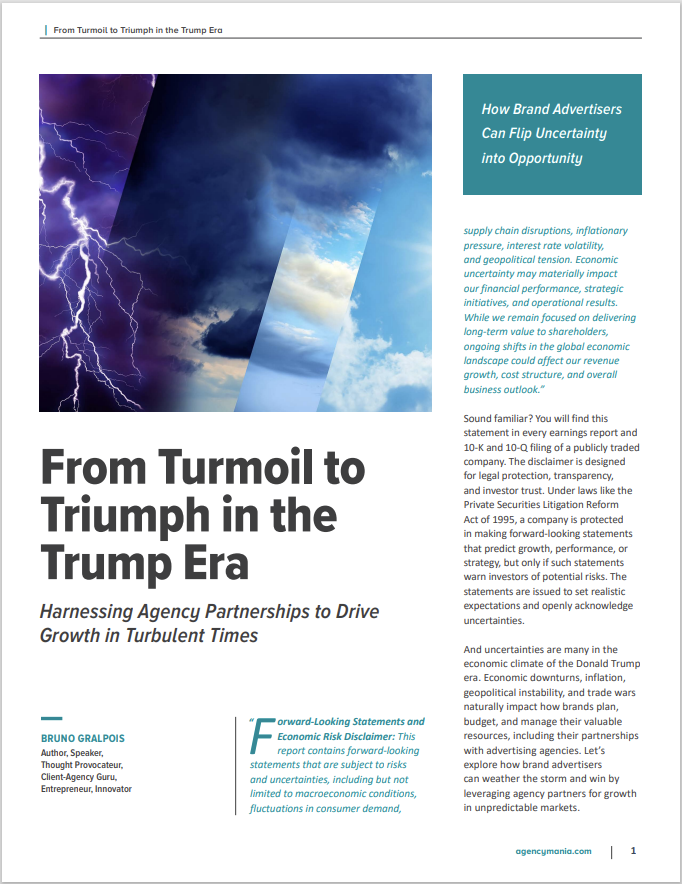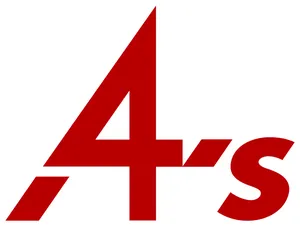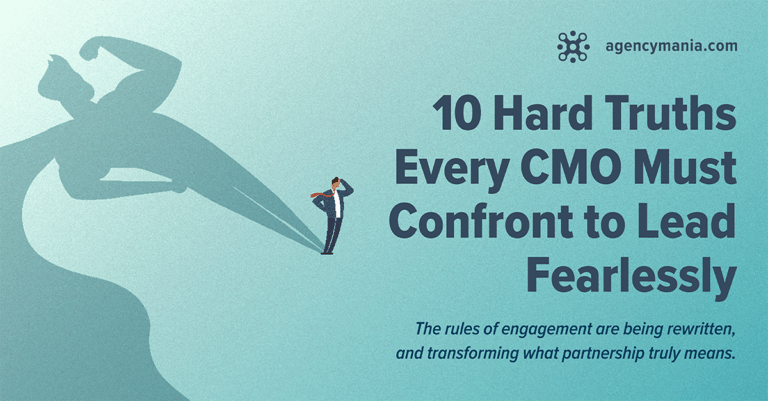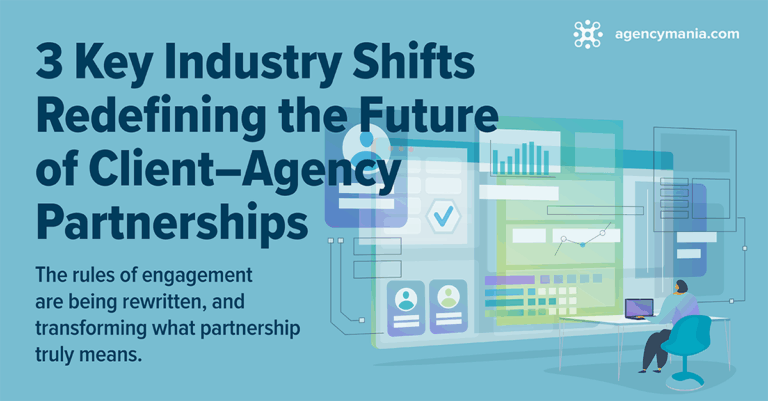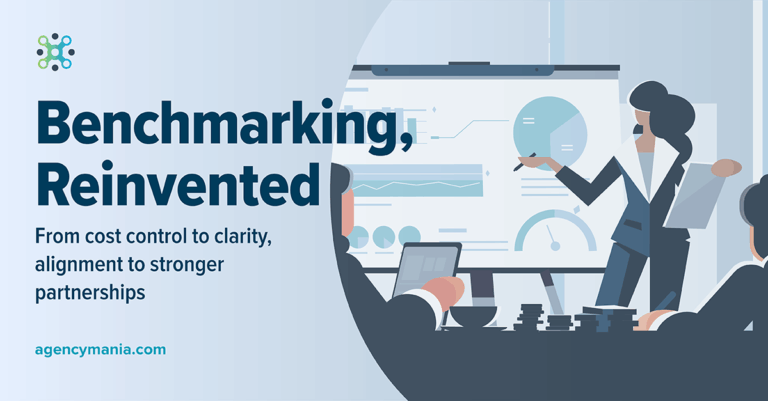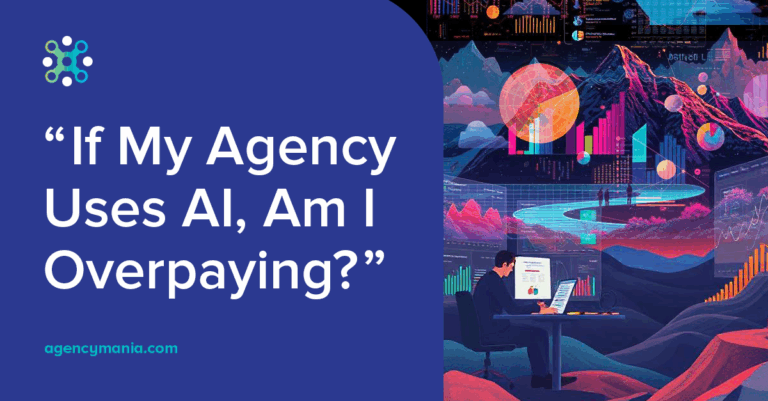Harnessing Agency Partnerships to Drive Growth in Turbulent Times: How Brand Advertisers Can Flip Uncertainty into Opportunity
“Forward-Looking Statements and Economic Risk Disclaimer: This report contains forward-looking statements that are subject to risks and uncertainties, including but not limited to macroeconomic conditions, fluctuations in consumer demand, supply chain disruptions, inflationary pressure, interest rate volatility, and geopolitical tension. Economic uncertainty may materially impact our financial performance, strategic initiatives, and operational results. While we remain focused on delivering long-term value to shareholders, ongoing shifts in the global economic landscape could affect our revenue growth, cost structure, and overall business outlook.”
Sound familiar? You will find this statement in every earnings report and 10-K and 10-Q filing of a publicly traded company. The disclaimer is designed for legal protection, transparency, and investor trust. Under laws like the Private Securities Litigation Reform Act of 1995, a company is protected in making forward-looking statements that predict growth, performance, or strategy, but only if such statements warn investors of potential risks. The statements are issued to set realistic expectations and openly acknowledge uncertainties. And uncertainties are many in the economic climate of the Donald Trump era. Economic downturns, inflation, geopolitical instability, and trade wars naturally impact how brands plan, budget, and manage their valuable resources, including their partnerships with advertising agencies. Let’s explore how brand advertisers can weather the storm and win by leveraging agency partners for growth in unpredictable markets.
Turning Turbulence into Traction:
Navigating Legacy Approaches to Budgeting and Agency Collaboration
When uncertainty looms large, many brand advertisers instinctively revert to conventional planning and budgeting approaches, even if those methods may hinder growth.
– Prioritize smarter, safer investments:
The least drastic—and often most strategic—approach in uncertain times is to stay the course while staying alert. This means closely monitoring macroeconomic signals, preparing for potential slowdowns or reinvestment windows, and managing risks without derailing existing plans. Brands that adopt this mindset maintain investment levels with cautious optimism, positioning themselves to seize opportunity while others retreat. During the COVID crisis, some bold advertisers gained significant market share by outpacing risk-averse competitors. For agency partnerships, the direct impact is minimal—aside from heightened scrutiny on costs and a shared sense of nervous vigilance.
– Freeze strategically or across the board—navigating budget holds with intent:
The next level of cost control often takes the form of broad budget freezes, particularly in nonstrategic areas like travel or discretionary marketing spend. It’s a familiar reflex: pause projects that aren’t mission critical or that don’t drive immediate growth or profitability. Such initiatives are rarely canceled outright; they’re placed on hold, ready to resume once market conditions stabilize and confidence returns.
– Targeted trims or sweeping cuts—navigating budget decisions:
The next stage of cost control—a systematic freeze on marketing budgets—is more decisive and deliberate. It signals a deeper recognition that economic uncertainty isn’t a passing storm but the new reality. In response, brand advertisers shift from caution to containment, tightening spend with sharper precision via slashing in some areas and divesting in others. In many cases, the cuts extend companywide, touching every function as firms brace for prolonged volatility and fight to protect the bottom line.
– Sharpen the scalpel—reduce fees responsibly and raise the bar on partners:
In more extreme situations, companies zero in on expense categories that, fairly or not, are seen as low-hanging fruit for cuts. Agency fees, often labeled “nonworking spend,” become an easy target for eager but uninformed stakeholders who overlook the ripple effects of slashing critical resources. What may seem like a harmless budget trim can quickly backfire, undermining performance, slowing execution, and ultimately hurting the very objectives those cuts were meant to protect. This isn’t to say there’s no room for better cost efficiency—wasteful spend should be addressed. However, smart companies distinguish between reckless cuts and strategic reinvestments that align with business priorities.
As volatility rises, brand advertisers frequently lean on the legacy planning and budgeting practices listed above. They default to the known, even when the moment demands reinvention. Let’s explore alternative ways to prepare for the unknown.
From Economic Uncertainty to Strategic Advantage:
Unlocking Growth Through Smarter Agency Partnerships and Innovation
In times of uncertainty, the instinct to slash or freeze budgets is strong, and understandable. But quick cuts often come with hidden costs and unintended consequences that may stall momentum and erode long-term value. There are smarter ways to drive efficiency without sacrificing progress.
– Don’t overindex on agency fees:
Agency fees are not just line items; they’re essential investments that fuel execution and bring strategy to life. Especially in models where retainers still dominate, agency fees fund the talent and thinking required to turn vision into results. Think of it like a restaurant: a prime location, a well-stocked kitchen, and quality ingredients mean little without a skilled team to deliver the experience. Yet agency headcount remains one of the most hotly debated and arbitrarily adjusted areas of spend. It’s an easy target in budget negotiations. While it’s reasonable to examine these costs, brands must also scrutinize media and production budgets for hidden inefficiencies. True optimization looks across the full mix— not just the most visible parts.
– Agencies as part of the solution:
When brands are seeking efficiency, their agency should be viewed as a trusted ally and not as a target. Rather than placing blame, brands should invite agencies to help uncover savings through smarter processes—like trimming unnecessary meetings, cutting bureaucracy, and streamlining workflows—and through spend efficiencies, such as identifying underperforming investments and eliminating waste. When a brand positions the agency as part of the solution, it transforms the dynamic: the agency stops being seen as the problem and starts becoming a powerful lever for progress.
– Focus on the SOW process and efficiency:
For brands still managing scopes of work manually or with outdated tools, this area represents one of the biggest untapped opportunities for efficiency. Automation transforms SOW planning from a reactive task into a strategic advantage by aligning deliverables with resources, optimizing fees using real benchmarks, and providing real-time data to drive smarter decisions and faster reallocations. The payoff? Marketing budgets that work harder, go further, and deliver greater impact.
In an age when uncertainty is the only constant, brand advertisers and their agencies can no longer afford to operate with outdated assumptions or reactive tactics. The smartest advertisers aren’t just surviving. They’re rewriting the playbook by embracing innovation, empowering agency partners, and turning operational discipline into a competitive edge.
This is not about doing more with less. It’s about doing the right things with precision, purpose, and impact. In today’s turbulent economy, resilience is built through reinvention, not retreat. The future belongs to the bold, the smart, and the prepared.
Author, Speaker, Thought Provocateur, Client-Agency Guru, Entrepreneur, Innovator

